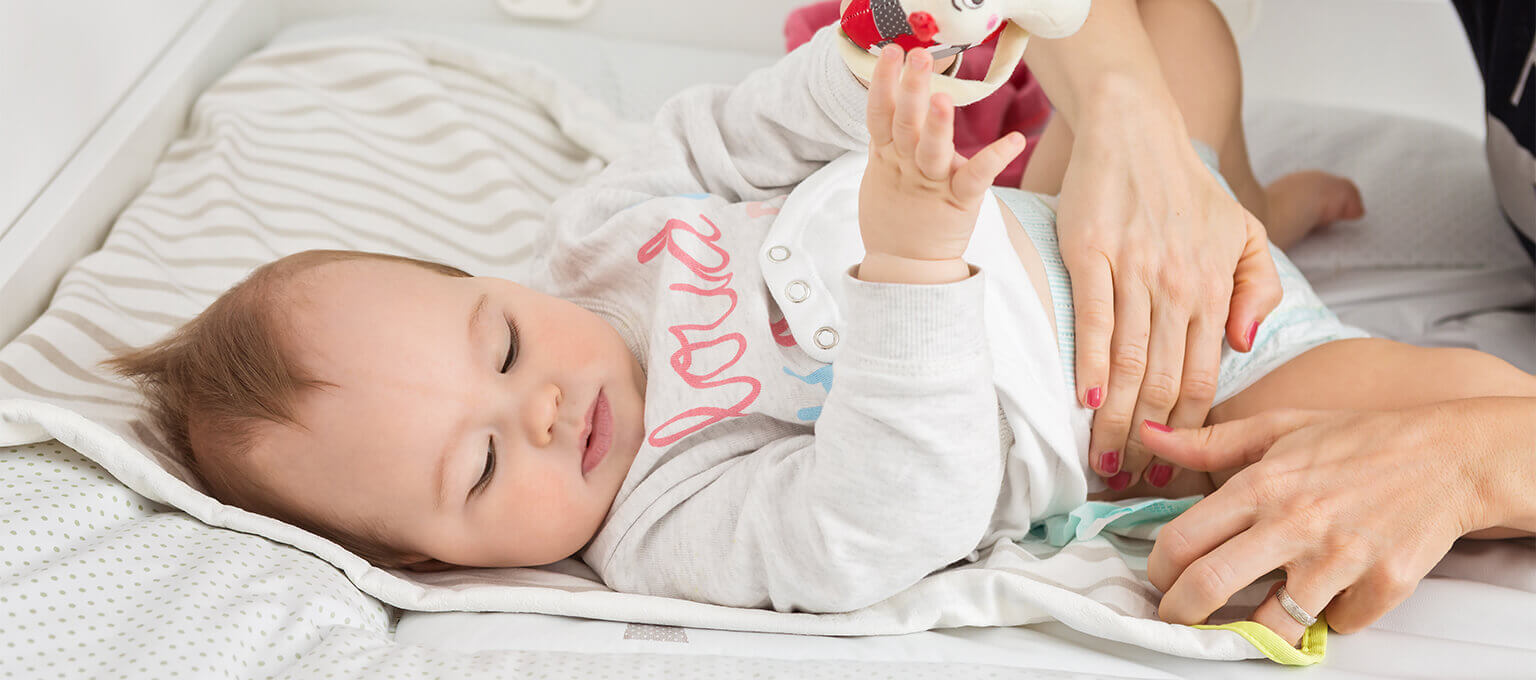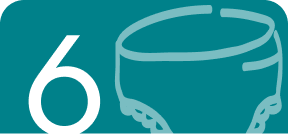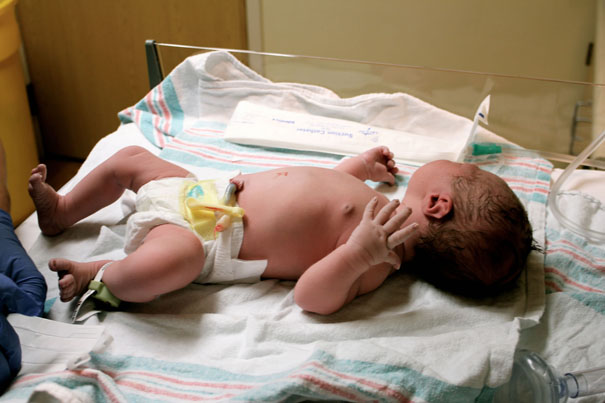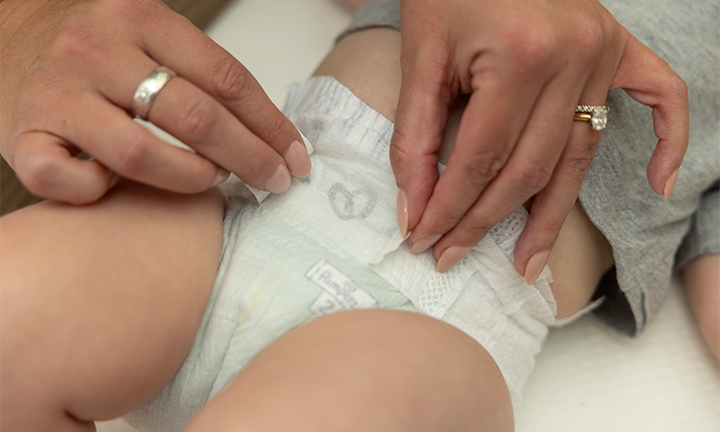
Baby Poop — The Ultimate Guide
In this article
Baby poop is probably something you were expecting to deal with, but did anyone tell you how varied the contents of your little one’s diapers could be? Runny or firm, black, green, or yellow—even mucus in your baby’s poop can be part of the adventure. Those diaper changes are, of course, a regular part of your daily routine as a parent, but they can also help you keep an eye on your baby’s well-being. Learn what the color, consistency, and frequency of baby poop can tell you about your baby’s health and development.
Your Baby’s Poop — What’s Normal?
You might be wondering what healthy baby poop should look like. It’s a fair question, because the color and consistency of your baby’s poop changes over time depending on various things, especially what your baby is eating.
Here’s a rough guide to what you’re likely to find in your little one’s diapers over the first few days, weeks, and months after your baby is born.
Meconium
Your baby’s first few diapers will likely contain a gooey, dark-green, tar-like substance, with hardly any smell. This is called meconium.
This is a distinct type of poop made up of things like mucus, skin cells, lanugo hairs, and other particles your baby swallowed, along with the amniotic fluid, while still in the womb.
It takes a few days for your little one to pass all the meconium out of their system, but as this happens, they’ll start to have regular baby poops. The color will shift from being almost black to a yellowy green and there may be less mucus present. Speak to your baby’s healthcare provider if your baby’s first bowel movement doesn’t happen within the first 24 hours after birth.
Regular Baby Poop
Once the meconium is out of your baby’s system, their regular poop can vary a lot, depending on how they’re being fed. Here is what you’ll probably find in your little one’s diapers:
If your child is eating finger foods, you might see undigested bits of food like the skins of peas or tomatoes.
This is because your little one’s digestive system is still getting the hang of processing all these new foods.
What the Colors of Baby Poop May Mean
You might be surprised by a change in the color of your baby’s poop, which can range from the mustardy hues of breast-milk poop and the yellow-tan of formula-fed baby poop to various other shades of yellow, brown, and even green. You might also find mucus in baby poop, which can create a translucent or milky coloring.
Warning Colors
Certain colors of stool can be a sign of a possible health issue. Always check in with your baby’s healthcare provider if your baby’s poop is any of the following colors:
Baby Poop Color Chart
To help you visualize the array of baby poop colors, here is a handy chart:
How Often Will Your Baby Poop?
The frequency of your baby’s poops will change as your little one grows and their digestive system develops, but it’s also affected by the feeding method that you use.
Can Your Baby Make Too Much Poop?
The amount of poop your baby makes each time can vary. As long as their weight gain is on track, and the stools are soft, all is probably fine.
If your baby’s poop seems watery or is filled with mucus, and they are pooping much more frequently than usual or has other symptoms, like a high temperature (100.4 degrees Fahrenheit or above), this could be diarrhea.
See your baby’s healthcare provider if you think your little one might have diarrhea, especially if they’re under 3 months.
It’s worth knowing that newborns and younger babies are more likely to produce lots of little poops one after the other. If you notice that your baby has just had a bowel movement, you might be able to save yourself an extra diaper change by waiting just a little longer in case there’s more to come.
Each one of those diaper changes could be earning you Pampers Cash that you can use toward digital offers on the Pampers products you already buy. Download the Pampers Rewards app to get started right now!
When There’s No Poop — Constipation
With all the variation in how often your baby poops, you may sometimes wonder how you can tell if your little one is constipated.
Constipation in babies is more common after the introduction of solids, but it can occur in younger babies, too. Here are some typical signs of constipation:
What Can You Do About Constipation?
If you think your baby is constipated, see their healthcare provider for advice. Don’t give your baby any medication, including a laxative, unless it’s specifically prescribed by their provider.
Call their provider immediately if your little one doesn’t get better or has other symptoms like:
vomiting
fever
lethargy
loss of appetite
blood in the stool
How to Tell if Your Baby Has Pooped
Your baby’s poop may not always smell much, especially in the first few weeks, so how can you tell when a diaper change is needed?
One tell-tale sign is straining: Passing a stool is hard work for small babies. You might notice your little one getting red in the face with the effort of pushing out that poop.
You’ll soon get to know your baby’s facial expression when they’re having a bowel movement, or—when they’re old enough to stand and walk—the squatting pose that they adopt when they need to go.
Use our handy Diaper Size and Weight Chart to make sure your baby's diapers always fit properly
FAQs at a Glance
How long can babies go without pooping?
After the first six weeks, breastfed babies can sometimes go for several days between bowel movements. Formula-fed babies may sometimes poop every other day.
What does diarrhea look like in babies?
Diarrhea is a watery (not just mushy) stool that occurs more frequently than regular poop. It may also contain large amounts of mucus.
What helps a constipated newborn?
If your newborn is constipated, talk to your baby’s healthcare provider, who will recommend what's best for your little one.
Is mucus in baby poop bad?
Small amounts of mucus in baby poop are typically normal, especially during the first few bowel movements and as your child grows and starts eating varied foods. If you notice a lot of mucus or other symptoms of an infection (like fever, vomiting, diarrhea, etc.), contact your baby’s healthcare provider.
- AAP
- Healthy Children: Baby’s First Day – Bowel Movements
- Healthy Children: The Many Colors of Poop
- Healthy Children. Baby's First Days: Bowel Movements & Urination
- Healthy Children: Starting Solid Foods
- Healthy Children: Diarrhea in Babies
- Healthy Children: Infant Constipation
- Healthy Children: Pooping By the Numbers
- Mayo Clinic: Baby poop
- Mayo Clinic: Infant constipation
- LLLI: Baby’s poop
- LLLI: Constipation
Read more about Baby
Related Articles
Join a World of Support
through Pregnancy and Parenthood.
TRACK WITH TOOLS
LEARN WITH EXPERTS
GET REWARDED






















